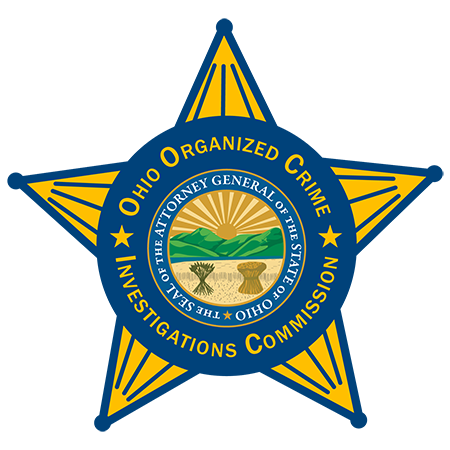Contact Us
To provide feedback on the Community Policing Dispatch, e-mail the editorial board at CPDispatch@usdoj.gov.
To obtain details on COPS Office programs, publications, and resources, contact the COPS Office Response Center at 800-421-6770 or AskCopsRC@usdoj.gov

U.S. Department of Justice
Office of Community Oriented Policing Services
Washington, DC 20530
 “When I grow up, I want to be a prostitute. . . said no one ever.” Columbus Division of Police Sgt. Mark Rapp used that line to open a recent planning meeting for an anti-trafficking operation in central Ohio. I’d heard Rapp, who leads the Central Ohio Human Trafficking Task Force, say it before, and the other 50 or so law enforcement officers at the meeting were probably familiar with the sentiment, too.
“When I grow up, I want to be a prostitute. . . said no one ever.” Columbus Division of Police Sgt. Mark Rapp used that line to open a recent planning meeting for an anti-trafficking operation in central Ohio. I’d heard Rapp, who leads the Central Ohio Human Trafficking Task Force, say it before, and the other 50 or so law enforcement officers at the meeting were probably familiar with the sentiment, too.
To be honest, I didn’t give Rapp’s words much thought until a few days later, as I watched my twin 10-year-old daughters board their school bus. That’s when it hit home that human trafficking is a problem that girls just like my daughters will be victimized by, and girls who live right in my community are at risk.
We’ve seen that human trafficking doesn’t just affect strangers living in some far-off big city. It is happening in suburbs and rural communities, too, right now. Local johns seek out sex, and local traffickers find, trap, and exploit girls and boys to meet that “demand” with their “supply.” Much like the opioid epidemic, human trafficking spares no ethnicity, race, or socioeconomic status with its devastation.
That’s why it is essential that local authorities—those who know their communities best—lead the fight against human trafficking in their hometowns.
The Ohio Organized Crime Investigations Commission (OOCIC), for which I serve as deputy director, helps make that possible. The commission — made up of the Ohio attorney general, two chiefs of police, two county sheriffs, and two county prosecutors — fights organized criminal activity throughout Ohio. Among other priorities, it investigates drug trafficking, theft rings, white collar crimes, and, yes, human trafficking.
OOCIC, housed within and funded by the Ohio Attorney General’s Office, works by forming special task forces consisting of representatives from multiple local law enforcement agencies, which maintain operational control of an investigation.
Ohio is a home-rule state, meaning that most law enforcement and prosecutorial functions fall to the 88 county sheriffs, 88 county prosecutors, and 800-plus municipal, township, and university police agencies. But human traffickers do not restrict themselves to the jurisdiction of a particular law enforcement agency—which is why OOCIC and its task forces are so incredibly valuable. When the commission approves a request to form a task force, members can operate anywhere within the boundaries of that task force, even outside their home agency’s jurisdiction. For example, a city police officer who serves on an OOCIC task force can make arrests in a neighboring county if the task force operates within that county.
Beyond offering law officers more leeway to police organized crime, the commission assists with the cost of OOCIC investigations, provides day-to-day support with staff and criminal intelligence, and grants the task force director—always a local law enforcement official—subpoena authority, something that officers in Ohio typically don’t have.
Since 2012, OOCIC has helped form four anti–human trafficking task forces, focusing on central Ohio, southwestern Ohio, northern Ohio, and northeastern Ohio. (The southwestern task force finished its cases in 2016 and has been closed.) They have had undeniable success. Since 2015, these task forces have rescued 349 victims, referred 932 potential victims to social services, received 1,747 tips, and indicted 180 people on 878 felony counts.
Each task force encompasses officers from multiple law enforcement agencies who take a victim-centered approach, working with victim advocates every day. The advocates accompany the task force agents on undercover stings and often immediately engage with any human trafficking victims who are found. Throughout the course of an investigation, the advocate stays in contact with the victim, allowing the officers to concentrate on the investigation, including the search for and the rescue of additional victims.
 Human trafficking cases can take a year or more to reach the indictment phase and potentially another year to get to trial, in part because of the complicated nature of investigating the criminal enterprises involved, as well as the careful weighing of the evidence gathered during an investigation. Task forces, for example, must weigh the likelihood of being able to prove a trafficking-in-persons charge in court, which requires convincing a jury or judge that force, fraud or coercion existed in the case. That can be extremely difficult if the survivor is not willing or able to testify or does not wish to cooperate. Other crimes that occur in these cases, such as narcotics- and prostitution-related offenses, may represent the best chance to ensure that human traffickers serve prison time.
Human trafficking cases can take a year or more to reach the indictment phase and potentially another year to get to trial, in part because of the complicated nature of investigating the criminal enterprises involved, as well as the careful weighing of the evidence gathered during an investigation. Task forces, for example, must weigh the likelihood of being able to prove a trafficking-in-persons charge in court, which requires convincing a jury or judge that force, fraud or coercion existed in the case. That can be extremely difficult if the survivor is not willing or able to testify or does not wish to cooperate. Other crimes that occur in these cases, such as narcotics- and prostitution-related offenses, may represent the best chance to ensure that human traffickers serve prison time.
The task force agents and prosecutor also may need to educate officials in the criminal justice system about the complexities faced by victims. Most survivors suffer from drug addiction and the aftermath of tremendous trauma; agents strive to minimize the risk of re-traumatization. (OOCIC task forces also offer community outreach training and help keep state legislators educated about what is needed in the field.)
The meeting referenced at the beginning of this story centered on Operation Fourth and Goal, a recent task force–led effort that focused on central Ohio. More than 30 law enforcement agencies and social-service organizations worked together to focus on street prostitution, a reduction in demand and supply, and internet crimes against children. More than 100 people were arrested as part of the operation, and 43 victims were offered services.
Similar short-term, task force–led operations have resulted in dozens of arrests this year as local, state, and federal agencies have come together to rescue victims, identify and prosecute traffickers, encounter johns and child predators, and educate the public. In short, they’re working to make communities safer.
OOCIC plays an important role in assisting local law enforcement officers to get dangerous criminals off the streets and to help human trafficking survivors build better lives. We all want them to have the freedom to pursue whatever dreams they choose—to grow up to be anything they want to be.
Matthew Hilbert
Deputy Director – Ohio Organized Crime Investigations Commission
Office of Ohio Attorney General Dave Yost
Subscribe to Email Updates
To sign up for monthly updates or to access your subscriber preferences, please enter your email address in the Subscribe box.






